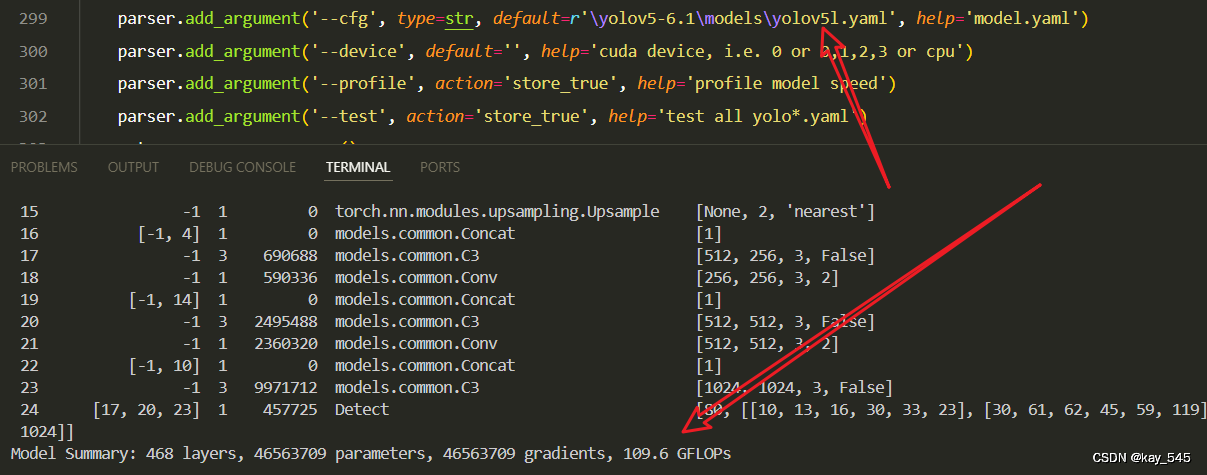美国索尔克生物研究所Belmonte研究团队和中科院研究团队在Cell上发表题为Caloric Restriction Reprograms the Single-Cell Transcriptional Landscape of Rattus Norvegicus Aging的研究内容,比较了摄入热量少30%的老鼠和正常饮食的老鼠之间的区别,发现限制热量(caloric restriction,CR)减弱了细胞类型组成、基因表达和核心转录调控网络中与衰老相关的变化。免疫细胞在衰老过程中增加,CR可以有利地逆转了衰老干扰的免疫系统。
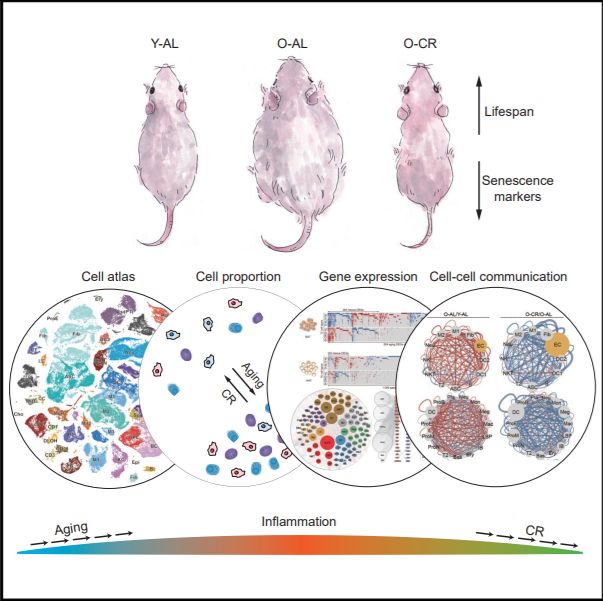
研究背景
衰老会导致人体多个组织的功能下降,并导致对各种慢性疾病的敏感性增加。与衰老相关的表型表现在生物、组织、细胞和分子水平上。衰老机制包括基因组不稳定、表观遗传学改变、细胞内通讯改变、慢性炎症增加、干细胞衰竭和衰老细胞积聚。衰老引起不同类型的细胞,组织和器官的不同反应,甚至在相同类型的细胞内也导致基因表达异质性增加。
目前已经提出了几种使细胞和器官恢复活力、延缓与年龄有关的疾病的发作、延长健康寿命的干预措施,其中热量限制(CR)被认为是最有效的干预措施之一。自1935年开始就进行CR研究,McCay等人在大鼠中进行了研究,研究显示CR可以促进身体健康,可以改善体重指数、皮肤状况、肝和肾功能以及降低心血管疾病的风险。啮齿动物的卡路里摄入量与寿命之间存在反比关系,这表明CR诱导的代谢重编程可能是与寿命延长相关的关键事件。在酵母、蠕虫、果蝇和小鼠中的研究进一步指出,营养响应信号分子(包括SIRT1、mTOR和PGC-1α)在衰老和CR的相互影响中具有重要的作用。
研究方案
方案: 简单点来说作者把小鼠主要分为3组。
(1)随便吃,5-month-old (young) rats ;
(2)70% CR节食,18 months old ;
(3)随便吃,18 months old。
取样:棕色脂肪 (BAT) ,白色脂肪(WAT),动脉,肾脏,肝脏,皮肤,骨髓;
注意:看作者的消化方案,并不是每一种脏器的消化方案都是相同的,可见作者在进行消化方案的设计上根据组织特异性进行了优化。胶原酶I,胶原酶IV和分散酶的消化浓度和时间均有不同,在做此类实验室时,建议先进行预实验摸消化条件。
测序数据分析介绍
作者同时做了scRNA-seq(重磅综述:三万字长文读懂单细胞RNA测序分析的最佳实践教程 (原理、代码和评述))和snRNA-seq ;
工具:Chromium Single-Cell 3′ Gel Bead and Library V2 Kit ;
比对: Cell Ranger software (version 2.2.0) ,Rnor_6.0 genome (for single-nucleus data );
筛选:(1)Cells with fewer than 500 genes detected (or single nuclei with fewer than 300 genes detected) or a mitochondrial gene ratio of greater than 10% (the threshold for kidney cells was a mitochondrial gene ratio of 50%) were excluded. (2)DoubletFinder package to exclude doublets;
批次矫正,降维,聚类:CCA,Seurat package (version 2.3.4) ;
伪时序分析:DDRTree dimensionality reduction algorithm ;
转录因子网络分析:GENIE3 R/Bioconductor packages (version 1.6.0) ;
配受体相互作用:CellPhoneDB software (version 1.1.0)
结果分析
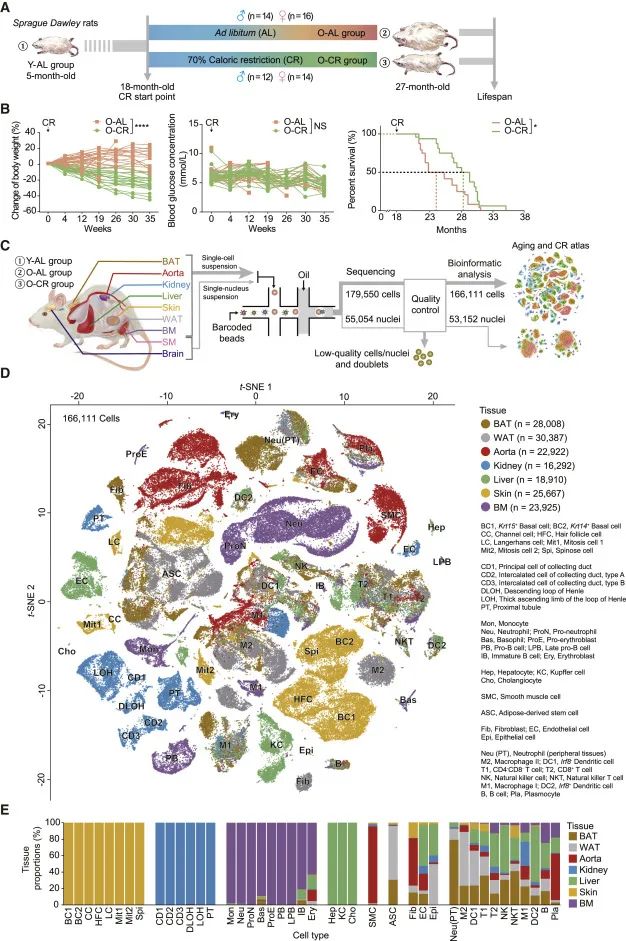
Figure 1. Construction of Rat Cell Atlases by scRNA-Seq
▼
(A) Schematic diagram of rats subjected to a 70% calorie-restricted diet for a 9-month period starting at the age of 18 months. Y-AL, 5-month-old rats fed ad libitum;O-AL, 27-month-old rats fed ad libitum; O-CR, 27-month-old rats subjected to a 70% calorie-restricted diet beginning at 18 months of age.(大鼠的27月龄相当于人体的70岁,5月龄相当于人体的16周岁)
(B) Quantification of the percentage of gained and lost body weight, blood glucose concentration, and survival curves for O-AL (n = 30, 14 male and 16 female rats) and O-CR (n = 26, 12 male and 14 female rats) groups. Two-tailed Student’s t tests or log-rank tests were used. The data are shown as means ± SEM. ∗p < 0.05; ∗∗∗∗p < 0.0001; NS, not significant.
(C) Flowchart overview of the scRNA-seq and snRNA-seq methodology.
(D) t-SNE plots showing different cell types across the seven tissues by scRNA-seq.
(E) Proportions of the 42 major cell types in the tissues by scRNA-seq.
(1)CR对寿命和老化特征的影响。如1A所示大鼠的27月龄相当于人体的70岁,5月龄相当于人体的16周岁。接受CR治疗9个月后,O-CR大鼠的体重较O-AL对照大鼠平均降低三分之一(32.6%±3.9%),对血清葡萄糖水平没有影响(图1B)。与O-AL对照大鼠相比,CR延长了O-CR大鼠的中位和最大寿命值(图1B),且Y-AL和O-CR大鼠肝脏中积累的脂质滴少。作者发现通过CR可以逆转脂滴沉积,抑制衰老大鼠血清中促炎性细胞因子肿瘤坏死因子-α(TNFα)的积累。总之,数据表明中度CR延迟衰老相关的表型的发生,并延长大鼠的寿命。
(2)scRNA-Seq构建大鼠单细胞图谱。作者对BAT、WAT、肝脏、肾脏、主动脉、皮肤和骨髓进行单细胞测序,共获得166,111个细胞(图1C)。确定了42种主要细胞类型(图1D)。其中有组织特异性的,如肝脏中的Cyp2e1+肝细胞和脂肪组织中的Pdgfra+脂肪干细胞(ASC)。也有较为通用的,如Pecam1+内皮细胞(ECs)和Lum+成纤维细胞存在于大多数组织中,包括BAT、WAT、主动脉、皮肤和肝脏(图1E)。值得注意的是,在BM以及其他六种类型的组织中均发现了Ptprc+细胞,并被细分为18种免疫细胞类型,包括嗜中性粒细胞、M1(促炎性)巨噬细胞(M1)、M2(消炎性)巨噬细胞( M2)、细胞毒性CD8+ T细胞(T2)、B细胞和浆细胞(图1D和1E)。总之,作者通过单细胞测序构建了大鼠单细胞转录图谱。
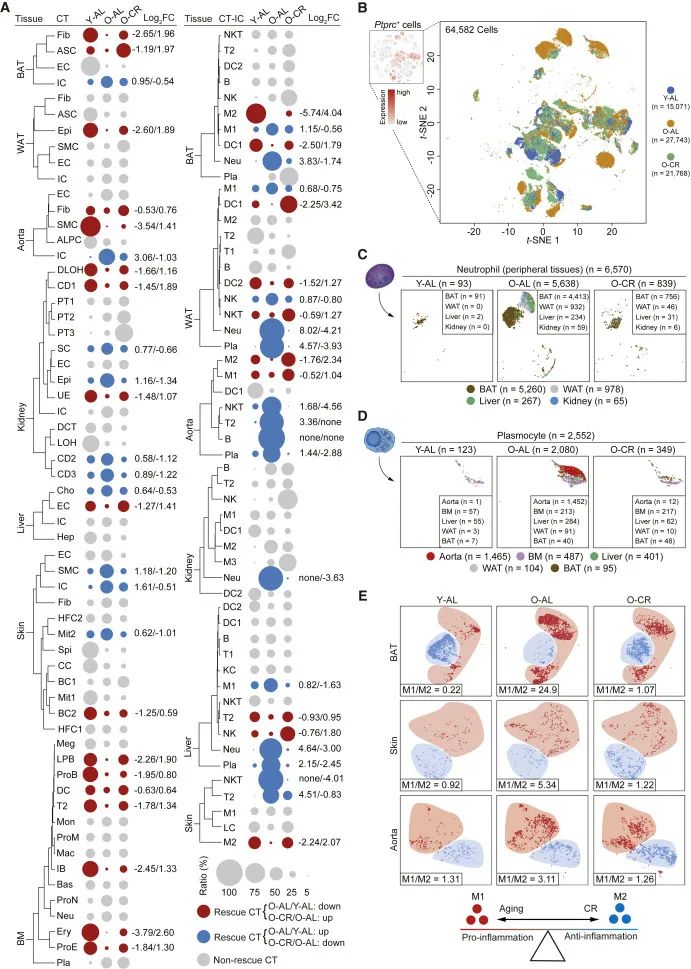
Figure 2. Changes in Cell Proportions during Aging and CR
▼
(A) Relative changes in cell ratios in different tissues across the three groups (Y-AL, O-AL, and O-CR). The numbers on the right indicate the Log2FC values of the cell ratios (O-AL/Y-AL and O-CR/O-AL). CT, cell type; IC, immune cell.
(B) t-SNE plots showing that immune cells accumulated in O-AL tissues. Left, t-SNE plot highlighting the Ptprc+ cells, except for the cells from BM, shown in the same layout used in Figure 1D. Right, t-SNE plot of immune cells (Ptprc+) in the Y-AL, O-AL, and O-CR groups.
(C and D) t-SNE plots showing the numbers of neutrophils (C) and plasmocytes (D) in the indicated groups (Y-AL, O-AL, and O-CR).
(E) t-SNE plots showing changes in the M1/M2 macrophage ratio.
(3)CR重建衰老的细胞生态系统。为了描述衰老和CR过程中细胞类型组成的动态变化,作者比较了Y-AL,O-AL和O-CR组之间的七个组织中每种细胞类型的比例(图2A)。与Y-AL组相比,O-AL组中各种细胞类型的比例发生了变化,其中许多变化都可以通过CR得以逆转(图2A)。例如,皮肤中的BC2(Krt14 +上皮干细胞)和BAT中的ASC的比例在衰老过程中降低,但可以随CR而增加(图2A),表明CR可能阻止了与年龄相关的干细胞衰竭。CR可逆转老年主动脉中平滑肌细胞(SMCs,SMA +)的减少(图2A),表明CR降低了老化血管的硬度。在BM、pro-B(ProB)细胞、晚期pro-B细胞(LPB)、未成熟B细胞(IB)、CD8+ T细胞(T2)、树突状细胞(DC,Irf8 +)、促红细胞(ProE)和老化过程中成红细胞(Ery)减少,CR也可以进行有效补充(图2A)。
值得注意的是,我们观察到在衰老过程中,除BM外,多个组织中免疫细胞(Ptprc+细胞)的数量均增加,而CR可以阻止免疫细胞增加(图2B)。中性粒细胞和浆细胞的数量在衰老过程中显着增加,在CR时减少(图2C和2D),这些变化通过相应组织的免疫染色得到确认。结合伪时间分析(NBT|45种单细胞轨迹推断方法比较,110个实际数据集和229个合成数据集)数据,这些数据表明中性粒细胞可能会在衰老过程中从BM迁移出并渗入外周组织,包括BAT、WAT、肝和肾组织,并且这种迁移可以被CR逆转。此外,与Y-AL大鼠相比,在O-AL大鼠的肝脏组织和WAT中观察到巨噬细胞浸润增加,并且在O-CR大鼠中这种浸润被逆转(图2A)。CR(BAT、皮肤和主动脉)逆转(图2E)不同类型巨噬细胞的组成比,提示CR诱导各种组织中巨噬细胞极化从促炎状态转变为抑炎状态。
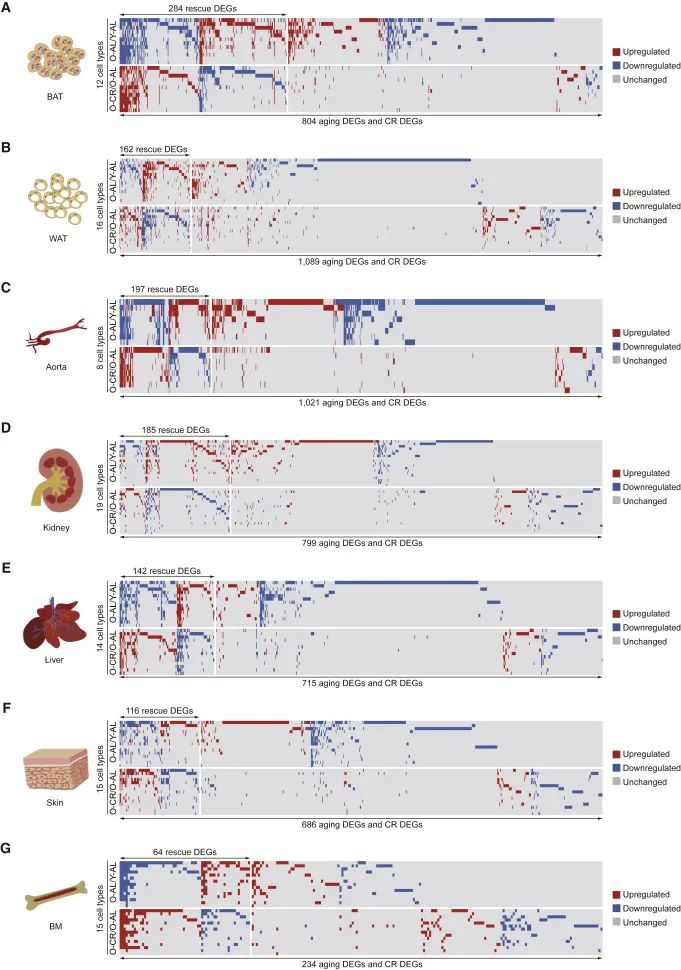
Figure 3. Changes in Transcriptional Profiles during Aging and CR
▼
(A–G) Heatmaps showing the distribution of DEGs in each cell type across the seven tissues including BAT (A), WAT (B), aorta (C), kidney (D), liver (E), skin (F), and BM (G). Each row represents one cell type, and each column represents one gene. Red, upregulated (LogFC > 0.5, adjusted p value < 0.05); blue, downregulated (LogFC > 0.5, adjusted p value < 0.05); gray, unchanged (|LogFC| < 0.5). Aging DEGs are the genes that were changed in the O-AL group compared to the Y-AL group, and CR DEGs are the genes that were changed in the O-CR group compared to the O-AL group. Rescue DEGs are the genes that exhibited the opposite changes in CR DEGs compared to aging DEGs.
(4)CR逆转组织中与衰老相关的基因表达变化。为了揭示与衰老和CR相关的分子事件,作者鉴定出O-AL和Y-AL大鼠之间以及O-CR和O-AL大鼠之间的DEG,分别称为“aging DEG”(differentially expressed genes,DEG)和“CR DEG”(图3A–3G和4A)。“aging DEG”表示与衰老相关的差异基因,“CR DEG”表示与热量控制相关的差异基因。这些DEG的综合比较分析进一步确定了老化的DEG,其中一部分老化相关的DEG被CR,因此被称为“rescue DEGs”(图3A–3G和4A)。
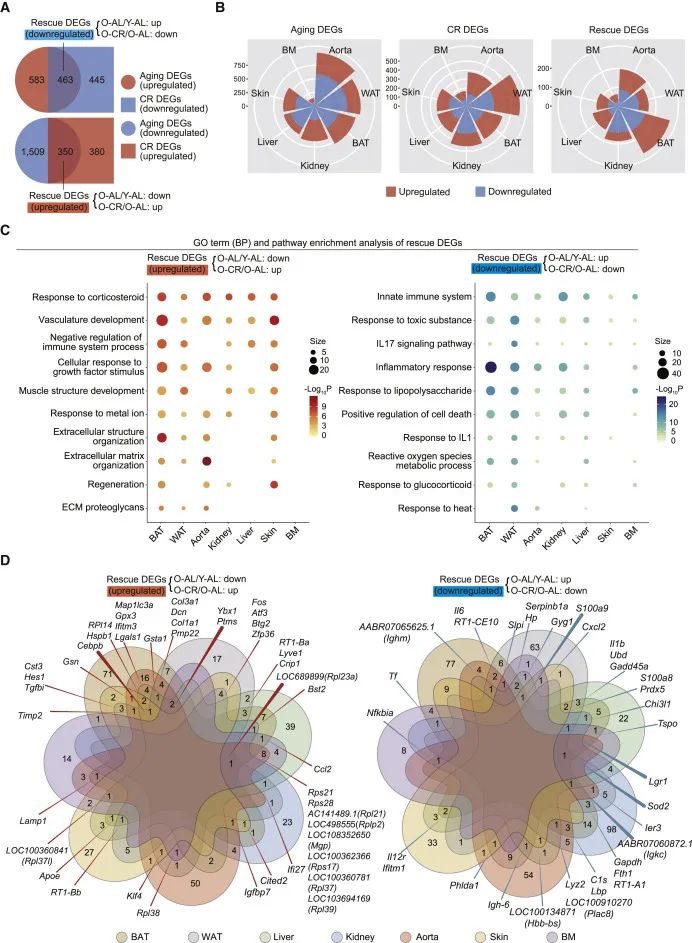
Figure 4. CR as an Effective Intervention to Reprogram the Aging Transcriptome
▼
(A) Venn diagrams showing the numbers of aging, CR, and rescue DEGs. The overlapping regions indicate the numbers of downregulated rescue DEGs (top) and upregulated rescue DEGs (bottom).
(B) Rose diagrams showing the numbers of aging DEGs, CR DEGs, and rescue DEGs in the seven tissues.
(C) Representative GO terms and pathways enriched in rescue DEGs based on functional enrichment analysis (p < 0.01).
(D) Venn diagrams showing the numbers of upregulated and downregulated rescue DEGs in each tissue. The genes present in more than three types of tissues are labeled in the diagrams. The bold lines indicate the genes upregulated and downregulated in at least five tissues.
接下来,为了区分衰老和CR对每种组织的影响,作者通过每种组织的Aging、CR和rescue DEG来区分衰老和CR对各个组织的影响。如玫瑰图所示,基于DEG的数量,主动脉组织、BAT和WAT受衰老和CR的影响最大(图4B)。相反,在BM中尽管细胞类型的组成发生了变化(图2A),但在衰老和CR后,检测到的DEG比上述组织少(图3A–3G和4B)。这些分析突出了衰老和CR的组织特异性作用,并表明多组织比较可能提供更全面的描述,以更好地了解衰老和CR的机制。
作者对每种组织的Aging、CR和rescue DEG进行GO富集分析(GO、GSEA富集分析一网打进)。在衰老过程中,通常在组织中被下调的基因在脉管系统发育、细胞对生长因子的反应、再生和细胞外基质组织中富集,而它们的下调可以被CR拮抗(图4C)。衰老还导致炎症反应、先天性免疫反应和细胞死亡的正调节,而这种增强可以被CR减弱(图4C)。组织中衰老和rescue DEG的功能比较分析进一步支持了CR在抗炎,组织再生和促血管生成途径中的作用。
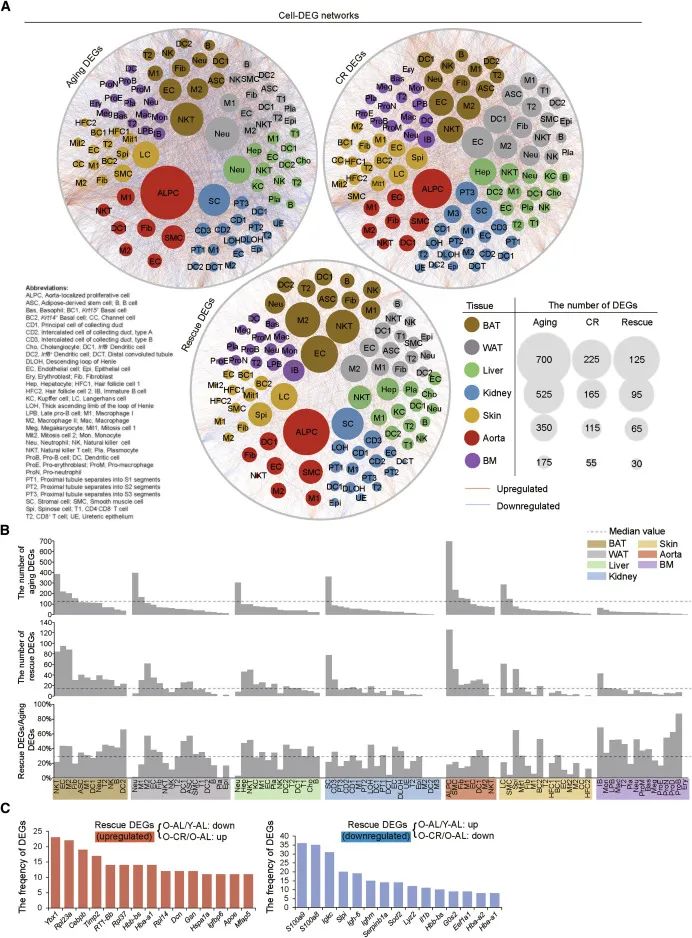
Figure 5. DEG Networks Resolving Gene Expression Heterogeneity among Different Cell Types
▼
(A) Network plots showing the aging DEGs, CR DEGs, or rescue DEGs in each major cell type of all seven tissues. The internal nodes annotate cell types, and the different colors indicate different tissues. The gray circular edge denotes the collections of DEGs. Each cell type is connected with its DEGs by the internal lines of the network.
(B) Bar plots showing the numbers of aging and rescue DEGs and the percentages of rescue DEGs and aging DEGs in each cell type.
(C) Bar plots showing the frequencies of the top 15 rescue genes observed across all cell types in the seven tissues.
(5)CR逆转与衰老相关的细胞类型特异性基因表达网络。如圆圈大小的变化所示,衰老和CR的影响不仅是组织特异性的,而且是细胞类型特异性的(图5A)。主动脉局部增殖细胞(ALPC),自然杀伤性T细胞(NKT)和嗜中性白细胞是受老化影响最大的细胞类型,而ALPC、M2和EC受CR rescue最有效(图5A和5B)。就组织特异性而言,中性粒细胞、M1和M2是受WAT衰老影响最大的三种细胞类型。在这些细胞类型中,CR更有效地逆转了M2和EC(图5A和5B)。在BAT中,NKT、M2和ECs是DEG中老化最多的三种细胞类型,它们也都是用CR逆转的最有效的细胞(图5A和5B)。在主动脉组织中,ALPC、SMC和成纤维细胞是DEG中衰老最多的三种细胞类型,而ALPC通过CR最有效地恢复为年轻状态(图5A和5B)。
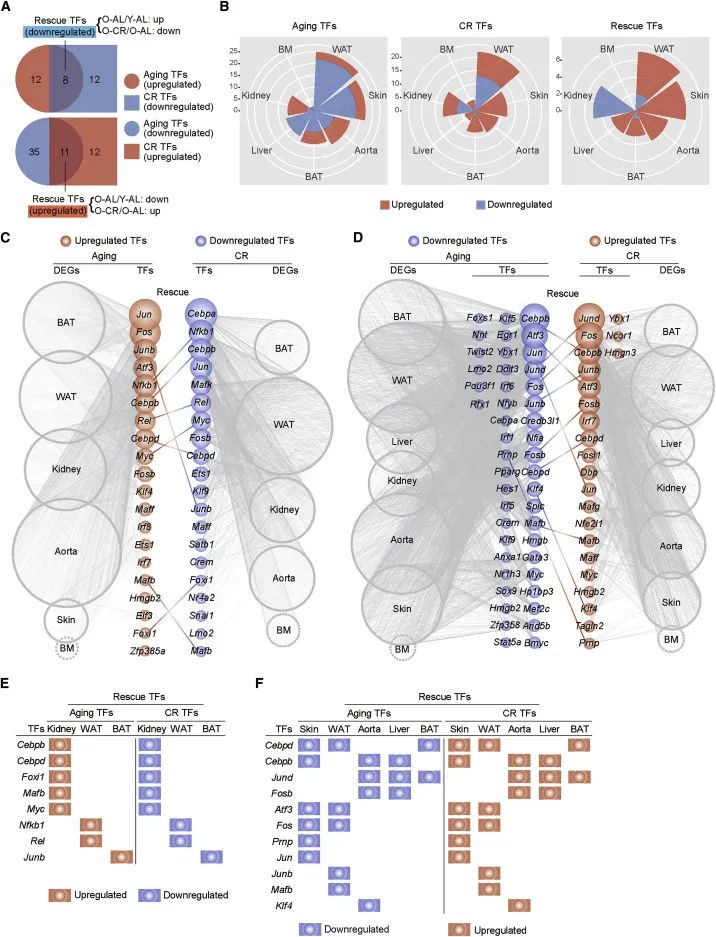
Figure 6. Changes in Core Regulatory Transcription Factors during Aging and CR
▼
(A) Venn diagrams showing the numbers of aging, CR, and rescue TFs. The overlapping regions indicate the numbers of downregulated or upregulated rescue TFs.
(B) Rose diagrams showing the numbers of aging, CR, and rescue TFs in the seven tissues.
(C and D) Network visualization of potential downregulated (C) and upregulated (D) rescue TFs. The internal nodes annotate TFs; the gray circular edge denotes the downstream target DEGs of these TFs. The node sizes are positively correlated to the number of associated DEGs. The connecting line in the middle denotes rescue TFs.
(E and F) Downregulated (E) and upregulated (F) rescue TFs in the indicated tissues.
(6)CR重建转录调控网络。为了了解衰老和CR的转录调控网络,作者使用SCENIC(SCENIC | 从单细胞数据推断基因调控网络和细胞类型)预测了七个组织中调节衰老和CR DEG的核心转录因子(AnimalTFDB 3.0 动物转录因子注释和预测的综合资源库)(图6A和6B)。
在衰老过程中失调并被CR恢复的转录因子被称为rescue转录因子,分布在BAT、WAT、肾脏、主动脉、肝脏和皮肤组织中(图6C-6F)。在WAT(Nfκb1、Rel、Cebpd、Atf3、Fos、Junb和Mafb),皮肤(Cebpd、Cebpb、Cetbb、Atf3、Fos、Prnp和Jun)和肾脏(Cebpb、Cebpd、Foxi1、Mafb和Myc)中发现了五个以上的转录因子(图6E和6F)。
尽管受CR影响的rescue转录因子在很大程度上是组织特异性的,但Cebpd是涉及炎症和脂肪形成的亮氨酸拉链转录因子,在衰老过程中通常被下调,而BAT,WAT和皮肤中的CR则被上调。此外,另一个亮氨酸拉链转录因子Cebpb调节炎症反应、脂肪形成和组织再生相关基因,在衰老过程中通常被下调,并在皮肤,主动脉和肝脏中被CR上调(图6D和6F)。伴随着Cebpd和Cebpb的衰老相关下调,炎症激活中的两个中心转录因子Nfκb1和Rel在衰老过程中被上调,而WAT中的CR被下调(图6C和6E)。
综上所述,这些数据表明,CR重编程了衰老受损的转录调节网络,并且与炎症和脂质代谢有关的转录因子可能会因衰老和CR而相互调节。(Cell重磅综述:关于人类转录因子,你想知道的都在这)
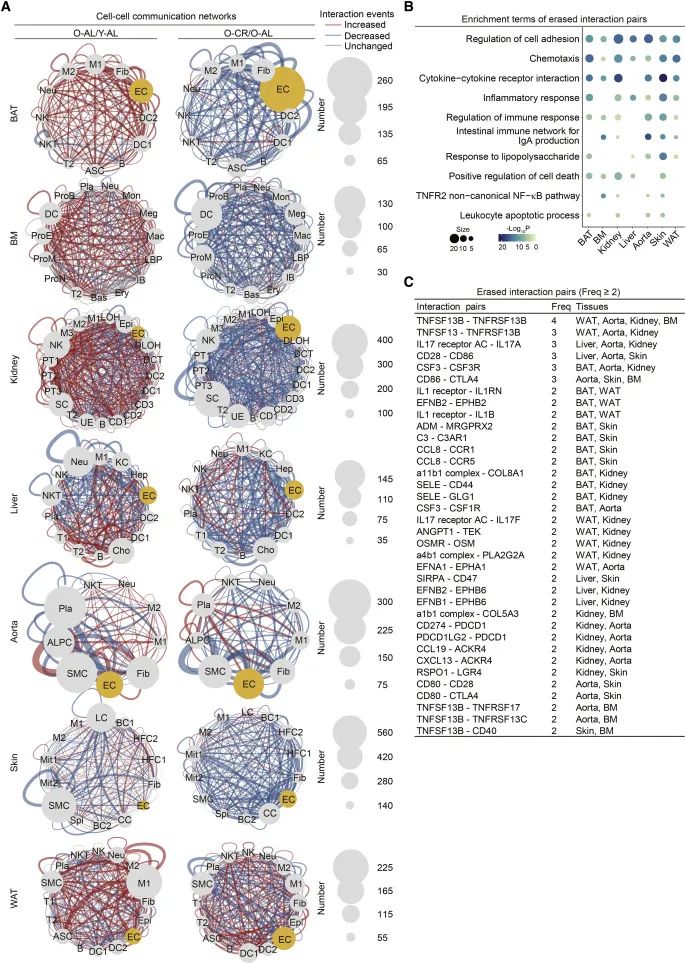
Figure 7. Changes in Ligand-Receptor Interactions between Different Cell Types during Aging and CR
▼
(A) Network plots showing the changes in ligand-receptor interaction events between different cell types in the O-AL/Y-AL and O-CR/O-AL comparison groups. Cell-cell communication is indicated by the connected line. The thickness of the lines is positively correlated with the number of ligand-receptor interaction events. The yellow node indicates ECs. Abbreviations for cell types are listed in Figure 5.
(B) Functional enrichment analysis showing the GO terms and pathways involving ligand-receptor interactions erased by CR. Erased terms are those present in the O-AL group and absent in the O-CR group (p < 0.01).
(C) The frequency (Freq) of erased interaction pairs in the seven tissues (Freq ≥ 2).
(7)CR可以改变衰老细胞的通讯模式。为了研究衰老过程中和CR时各种配体-受体相互作用的重新分布(哇!单细胞测序-配体受体互作分析原来可以这么简单又高大上!),我们计算了Y-AL、O-AL, 和O-CR中同一细胞类型中每对细胞类型以及自分泌信号传导过程中配体-受体对的数量。在七个组织中的不同细胞类型中鉴定了456种潜在的配体-受体相互作用对。
如图7A所示,与Y-AL组织相比,大多数O-AL组织的细胞间通信得到了增强。而CR停止了O-AL组织中特定细胞类型之间的许多类型的细胞间交流,特别是在BAT、BM、肾脏组织和肝脏组织中(图7A),大多数消除的相互作用发生在细胞因子和细胞因子受体之间(图7B)。
EC广泛存在于多个组织中,并且它们与其他细胞类型的相互作用在衰老过程中普遍增加,并在CR时受到抑制,这暗示EC可以作为由CR介导的靶向衰老干预的常见细胞类型。

Figure S7. Changes in Cell Type Composition and Transcriptional Profiles in the snRNA-Seq Data of Brain and Skeletal Muscle during Aging and CR, Related to “Nuclear Isolation and snRNA-Seq on the 10x Genomics Platform” in STAR Methods[1]
▼
(A) Cell nuclei extracted from the brain and skeletal muscle of rats in the three groups. Scale bars, 50 μm. DNA was counterstained by Hoechst 33342 and PI.
(B) Nucleus number, mean reads per nucleus, transcriptome mapping rate, sequencing saturation, gene number, and UMI number for the snRNA-seq data across the brain and skeletal muscle of female and male rats of the three groups.
(C) t-SNE and bar plots showing the cell atlas and the number of different cell types in the brain tissue (left) and skeletal muscle (right) of the three groups (Y-AL, blue; O-AL, orange; and O-CR, green). The full names of the 18 major cell types are as follows: VLMC, Vascular leptomeningeal cell; Per, Pericyte; EC, Endothelial cell; PM, Perivascular macrophage; IN, Inhibitory neuron; EN, Excitatory neuron; Ast, Astrocyte; OPC, Oligodendrocyte progenitor cell; Mic, Microglia; Oli, Oligodendrocyte; NMJ, Neuromuscular junction-postsynaptic muscle fiber; TF, Tendon fibroblast; SMC, Smooth muscle cell; Sat, Satellite cell; ST, Slow-twitch muscle fiber, type I; SC, Stromal cell; FT2, Fast-twitch muscle fiber, type IIA; FT1, Fast-twitch muscle fiber, type IIX.
(D) The marker genes of different cell types in the brain (left) and skeletal muscle (right).
(E) Relative changes in cell ratios in the brain (left) and skeletal muscle (right) across the three groups (Y-AL, O-AL, and O-CR). Each circle represents the relative cell ratio. The red circle denotes cell ratios lower in the O-AL group than in the Y-AL group and higher in the O-CR group than in the O-AL group (|Log2FC| > 0.5); the gray circle denotes cell ratios not markedly rescued by CR (|Log2FC| < 0.5). The numbers on the right indicate the Log2FC values of the cell ratios (O-AL/Y-AL and O-CR/O-AL). FC, fold change.
(F) Heatmaps showing the distribution of DEGs in each cell type in the brain and skeletal muscle. Each row indicates one cell type, and each column indicates one gene. Red, upregulated (LogFC > 0.5, adjusted p value < 0.05); blue, downregulated (LogFC > 0.5, adjusted p value < 0.05); gray, unchanged (|LogFC| < 0.5). The numbers of rescue DEGs are shown at the top of each heatmap. Aging DEGs are the genes that were changed in the O-AL group compared to the Y-AL group in each cell type. CR DEGs are the genes that were changed in the O-CR group compared to the O-AL group in each cell type. Rescue DEGs are the genes that exhibited the opposite changes in CR DEGs compared to aging DEGs in each cell type.
(8)衰老和CR后脑和骨骼肌细胞的单核转录组分析。作者对脑和骨骼肌进行单细胞核测序,作者检查了衰老和CR期间脑组织和骨骼肌中细胞类型的组成多样性。
与BAT和肝组织中的观察结果相似,来自O-CR大鼠的老年脑组织和骨骼肌中EC的数量均减少,而脑组织中EC的数量得以部分恢复(图S7E)。此外,抑制性神经元的百分比在衰老过程中降低,并在CR后恢复(图S7E),这与人脑中抑制性神经元与年龄相关的突触变化一致。但是与年轻的对应组织相比,老年骨骼肌中的卫星细胞数量有所减少且不能通过CR恢复(图S7E)。
在骨骼肌中总共鉴定出30个rescue DEG。大约一半是细胞骨架基因,包括Tnnt1、Myh7和Mylk2(图S7F)。在大脑的12个rescue DEG中,与细胞对DNA损伤的反应有关的四个基因(Fanca、Ddit4、Spata22和Msh3)在衰老过程中被下调并在CR时得到补充。
文章解读:Tiger
文章校对:生信宝典
[1]:
https://www.sciencedirect.com/science/article/pii/S0092867420301525?via%3Dihub#sec4
参考文献
Ma S, Sun S, Geng L,et al.Caloric Restriction Reprograms the Single-Cell Transcriptional Landscape of Rattus Norvegicus Aging. Cell. 2020 Feb 26. pii: S0092-8674(20)30152-5. doi:
10.1016

